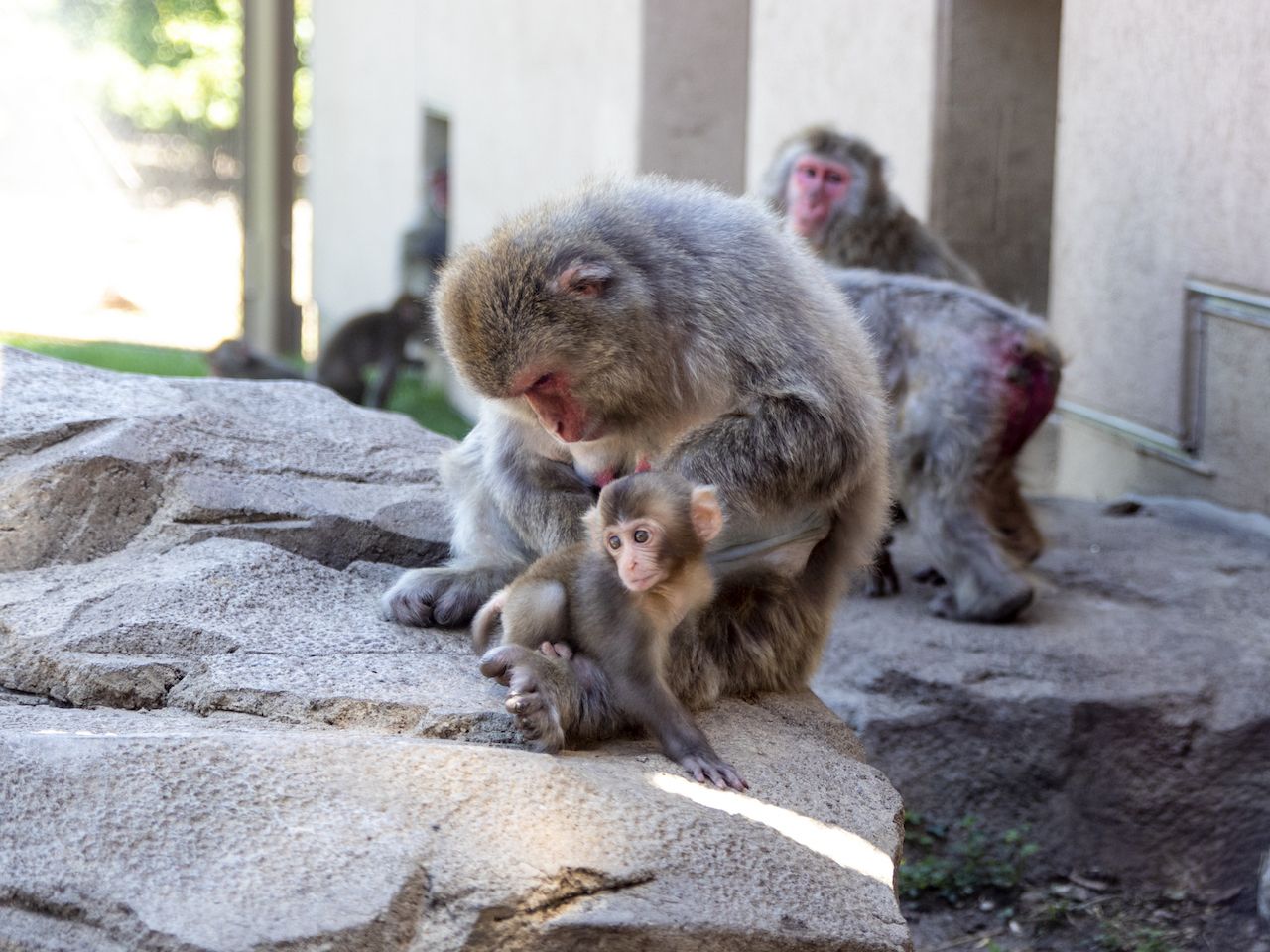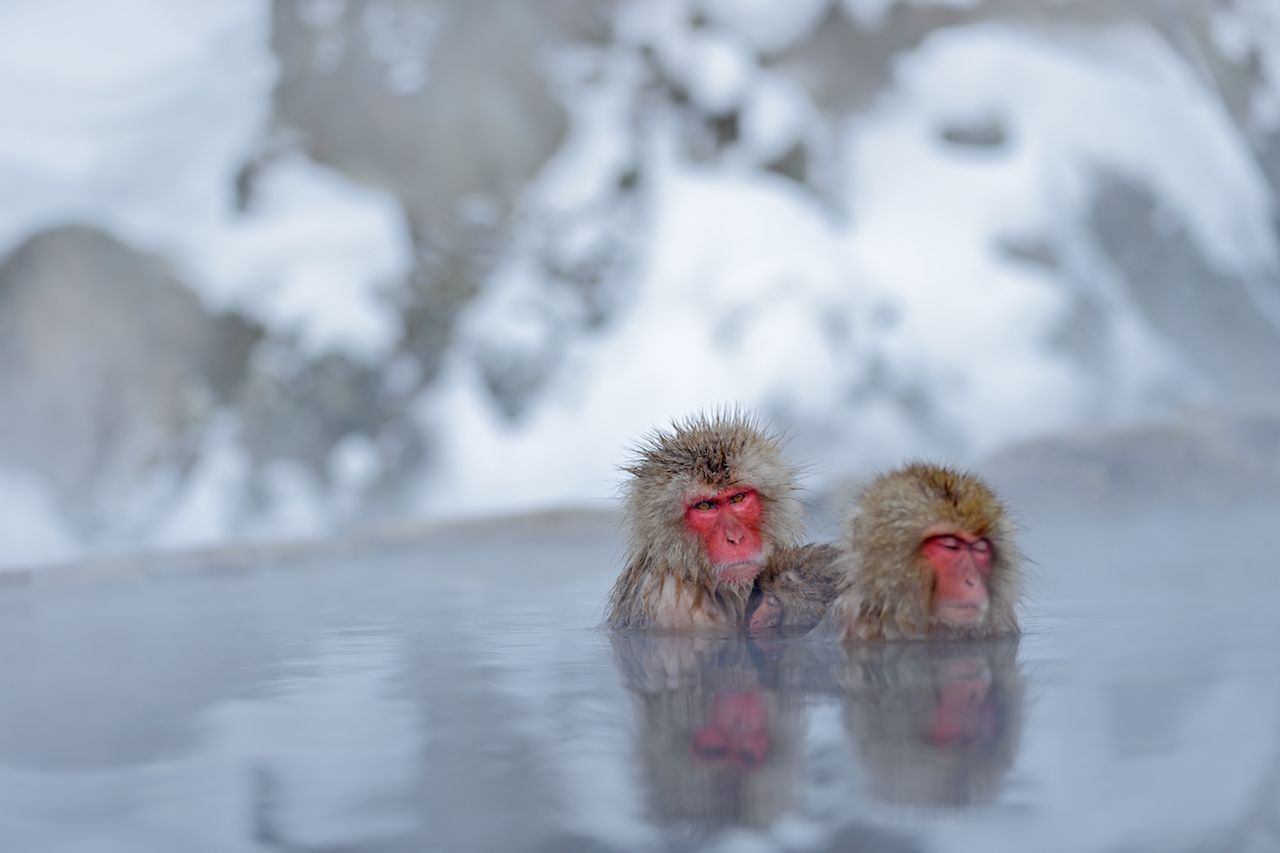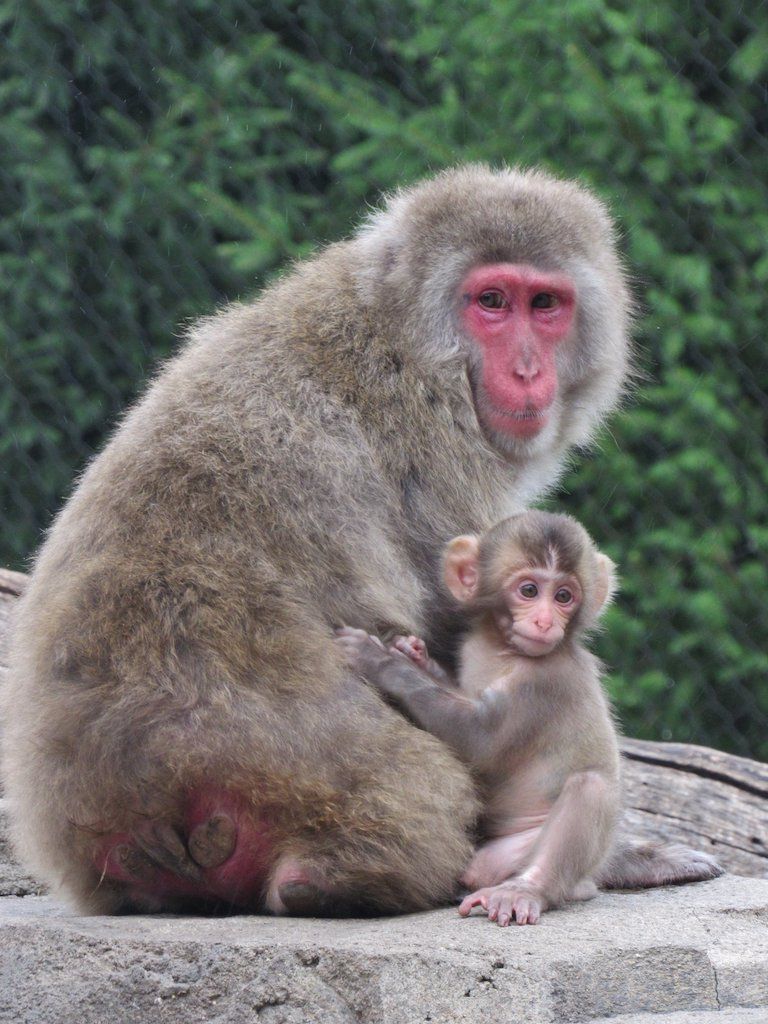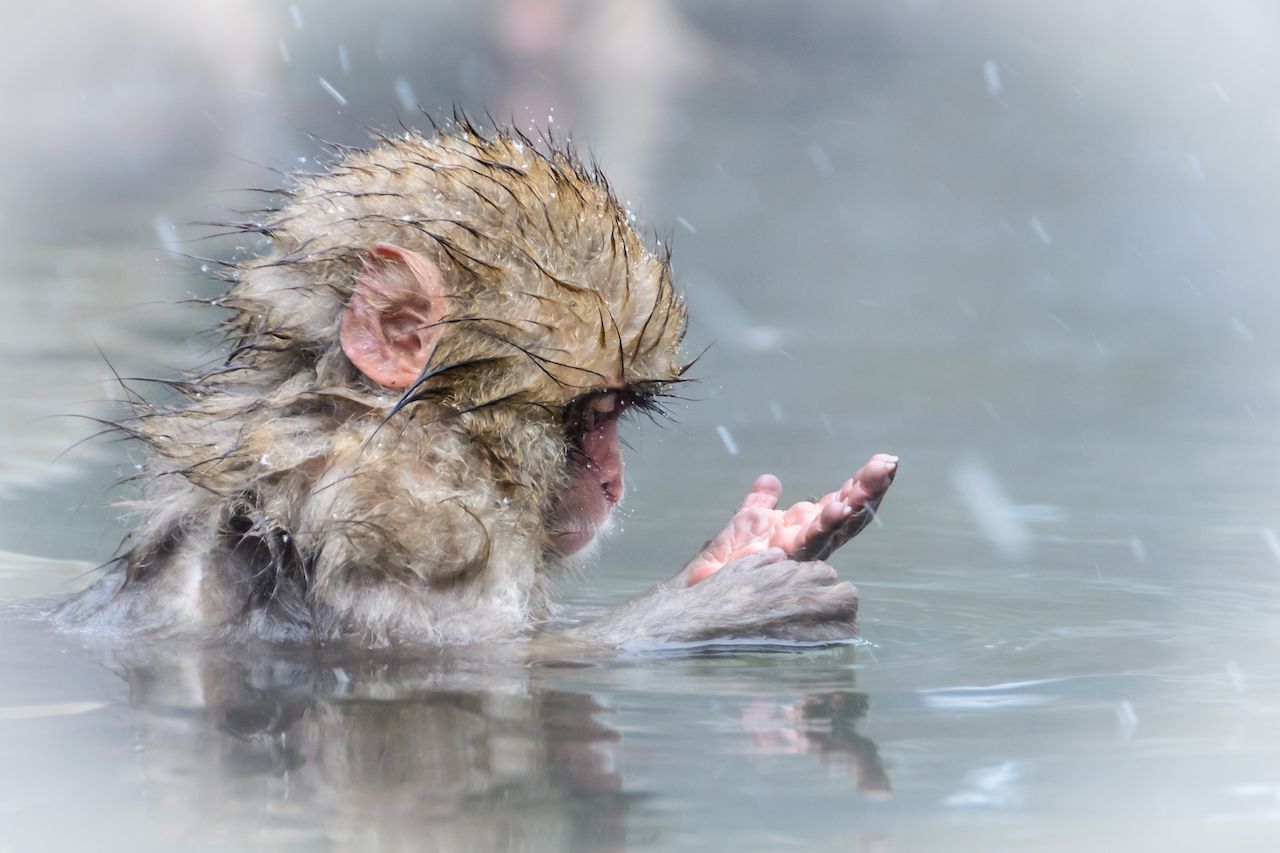We had you at baby snow monkeys, admit it.
And seriously, what’s not to love about a troop of macaques? These adorable red-faced primates first grabbed our collective hearts during the 1998 Winter Olympics in Nagano, Japan, when video clips of them relaxing in natural hot springs like jacuzzis at an après ski were all over TV. The macaques — or Japanese snow monkeys — are the northernmost non-human primates in the world, native to the mountainous regions of Japan, and the only ones other than humans to live in cold weather. And the only place you can see baby ones is in Japan.





